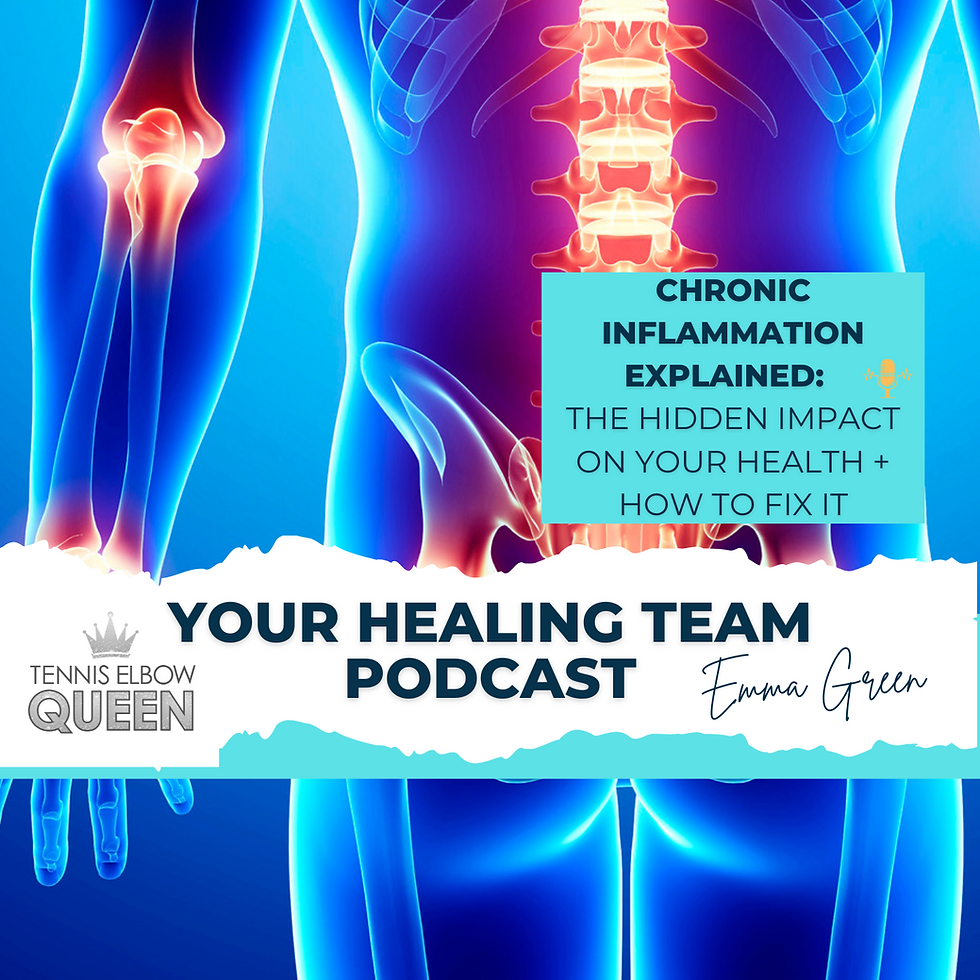Understanding Tennis Elbow: What’s Really Happening in Your Elbow?
- emmagreenpt
- Aug 23, 2024
- 2 min read
Hello, I'm Emma Green, also known as the "Tennis Elbow Queen." Today, I’m diving into a question I love answering: What exactly does tennis elbow look like in the elbow? Is it frayed tendons? It’s a fantastic question, and I’m excited to get descriptive and help you visualize what’s really going on.
What Is Tennis Elbow?
Tennis elbow, or lateral epicondylitis, involves the tendon that connects the forearm muscles to the bone on the outside of your elbow, specifically at the lateral epicondyle. This tendon, though small—about a centimeter long—can cause significant discomfort when injured.
Visualizing a Healthy Tendon
To help you understand, imagine a tendon like a tightly woven rope. In a healthy tendon, all the fibers are closely packed together, aligned in the same direction, much like the fibers of a rope. This uniform structure is what you would see if you were to scan a normal tendon using an ultrasound or MRI.
What Happens in Tennis Elbow?
Now, imagine if you grabbed that rope and twisted it the wrong way. The fibers start to splay apart, and unwanted cells begin to infiltrate the area. This is what happens when you develop tennis elbow or golfer’s elbow (the same condition affecting a different tendon). The tendon begins to degenerate—not because of age, but due to overuse. Imagine that rope unraveling; that’s essentially what’s happening to your tendon.
Treating the Symptoms vs. Healing the Tendon
It’s important to distinguish between treating symptoms and actually healing the tendon. Many traditional treatments, like painkillers, cortisone shots, electrotherapy, or massage, focus on relieving symptoms. While these methods can make you feel better, they don’t heal the tendon itself.
The Key to Healing: Eccentric Loading
Medical research shows that the only way to truly heal the tendon and reverse this degeneration is through a process called eccentric loading. Imagine someone taking that unraveled rope and tightening it back up—that’s what eccentric loading does for your tendon. Without incorporating eccentric loading into your treatment plan, the tendon won’t heal, no matter what other treatments you try.
Final Thoughts
So, in summary, tennis elbow involves a degenerated tendon where the fibers have come apart. To heal, we need to bring those fibers back together, and eccentric loading is the way to do it. If this post has sparked any questions, feel free to leave them in the comments below.
If you're ready to heal your tennis elbow once and for all, I encourage you to reach out, watch my webinar, buy my book, or join my group coaching program—whatever suits your learning style best. Let’s work together to heal your tennis elbow and restore your tendon to full health.




Comments